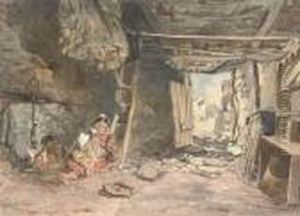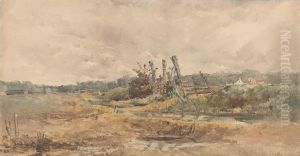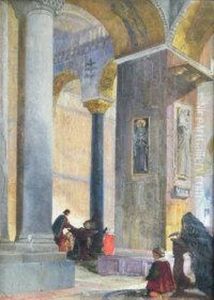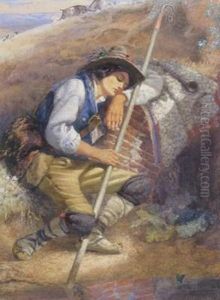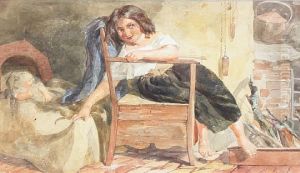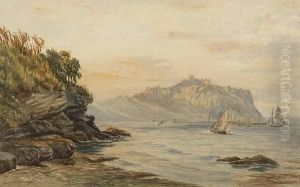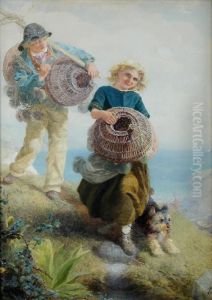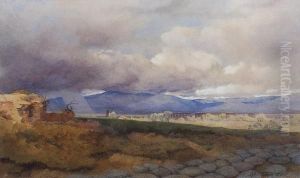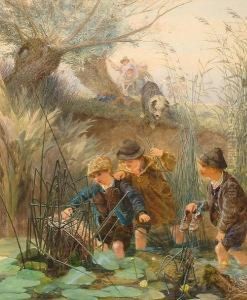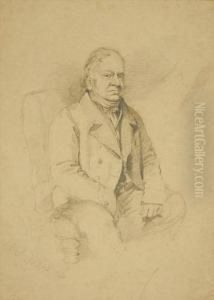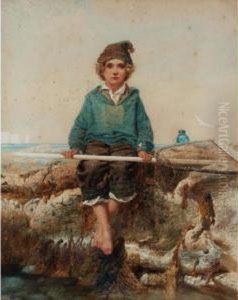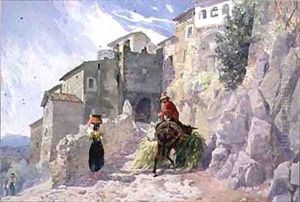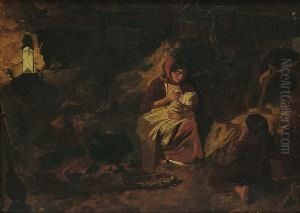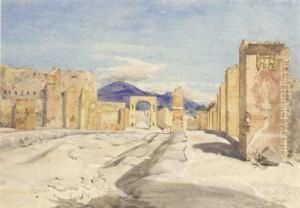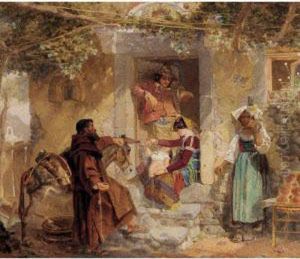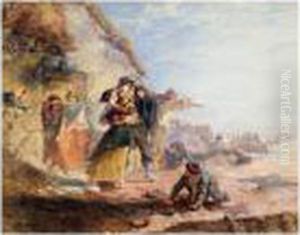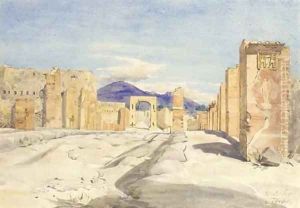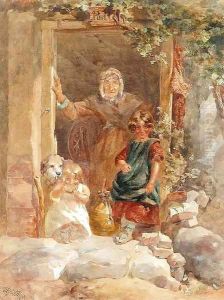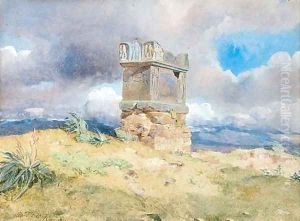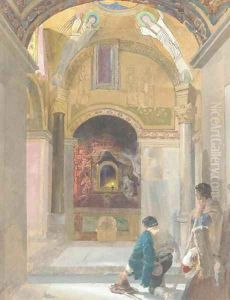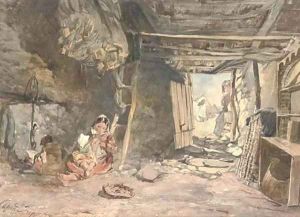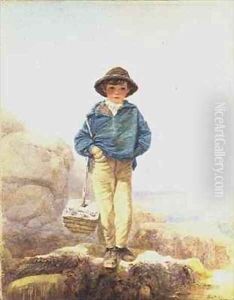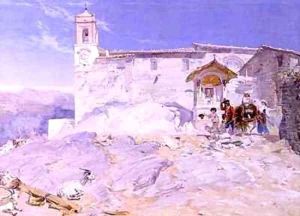Alfred Downing Fripp Paintings
Alfred Downing Fripp was a British artist known for his landscape and figure painting. Born on December 22, 1822, in Bristol, England, he was part of an artistic family; his father, George Arthur Fripp, and his uncle, Nicholas Pocock, were both notable painters of their time. Alfred showed an early interest in art and was encouraged to pursue his passion by his family.
Fripp received his formal art education at the Royal Academy Schools in London, where he studied under the tutelage of renowned artists of the age. He exhibited his work at the Royal Academy and the British Institution, gaining recognition for his skillful use of watercolor and his ability to capture the essence of the British countryside. His landscapes were appreciated for their detailed and atmospheric qualities, often depicting rustic scenes with a serene and contemplative air.
In the 1840s, Fripp traveled extensively through Europe, particularly Italy, where he was inspired by the Old Masters. His travels influenced his artistic style, and upon returning to Britain, he incorporated elements of what he had seen abroad into his own work. Fripp's paintings from this period show a marked development in his use of color and light, reflecting the romantic and picturesque sensibilities of the time.
Fripp also had a successful career as a figure painter, often incorporating human subjects into his landscapes. He had a keen interest in historical and literary themes, which he explored in his art. His depictions of characters from history and literature were characterized by a narrative quality and an attention to period detail.
During his lifetime, Alfred Downing Fripp was a respected member of the art community. He was a member of the Old Water-Colour Society (now the Royal Watercolour Society) and served as its President from 1875 until 1890. Fripp continued to paint and exhibit until his health declined.
Alfred Downing Fripp passed away on October 13, 1895. Today, his works can be found in various art collections and museums, where they continue to be appreciated for their charm and historical value. His legacy lives on as a testament to the Victorian era's fascination with rural landscapes and historical genre painting.
